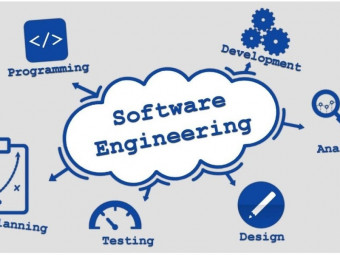Quantitative Finance Algorithmic Trading Ii Time Series
Technical Analysis (SMA and RSI), Time Series Analysis (ARIMA and GRACH), Machine Learning and Mean-Reversion Strategies
Last updated 2022-01-10 | 4.6
- Understand technical indicators (MA- EMA or RSI)
- Understand random walk models
- Understand autoregressive models
What you'll learn
* Requirements
* You should have an interest in quantitative finance and mathematicsDescription
This course is about the fundamental basics of algorithmic trading. First of all you will learn about stocks, bonds and the fundamental basic of stock market and the FOREX. The main reason of this course is to get a better understanding of mathematical models concerning algorithmic trading and finance in the main.
We will use Python and R as programming languages during the lectures
IMPORTANT: only take this course, if you are interested in statistics and mathematics !!!
Section 1 - Introduction
why to use Python as a programming language?
installing Python and PyCharm
installing R and RStudio
Section 2 - Stock Market Basics
types of analyses
stocks and shares
commodities and the FOREX
what are short and long positions?
+++ TECHNICAL ANALYSIS ++++
Section 3 - Moving Average (MA) Indicator
simple moving average (SMA) indicators
exponential moving average (EMA) indicators
the moving average crossover trading strategy
Section 4 - Relative Strength Index (RSI)
what is the relative strength index (RSI)?
arithmetic returns and logarithmic returns
combined moving average and RSI trading strategy
Sharpe ratio
Section 5 - Stochastic Momentum Indicator
what is stochastic momentum indicator?
what is average true range (ATR)?
portfolio optimization trading strategy
+++ TIME SERIES ANALYSIS +++
Section 6 - Time Series Fundamentals
statistics basics (mean, variance and covariance)
downloading data from Yahoo Finance
stationarity
autocorrelation (serial correlation) and correlogram
Section 7 - Random Walk Model
white noise and Gaussian white noise
modelling assets with random walk
Section 8 - Autoregressive (AR) Model
what is the autoregressive model?
how to select best model orders?
Akaike information criterion
Section 9 - Moving Average (MA) Model
moving average model
modelling assets with moving average model
Section 10 - Autoregressive Moving Average Model (ARMA)
what is the ARMA and ARIMA models?
Ljung-Box test
integrated part - I(0) and I(1) processes
Section 11 - Heteroskedastic Processes
how to model volatility in finance
autoregressive heteroskedastic (ARCH) models
generalized autoregressive heteroskedastic (GARCH) models
Section 12 - ARIMA and GARCH Trading Strategy
how to combine ARIMA and GARCH model
modelling mean and variance
+++ MARKET-NEUTRAL TRADING STRATEGIES +++
Section 13 - Market-Neutral Strategies
types of risks (specific and market risk)
hedging the market risk (Black-Scholes model and pairs trading)
Section 14 - Mean Reversion
Ornstein-Uhlenbeck stochastic processes
what is cointegration?
pairs trading strategy implementation
Bollinger bands and cross-sectional mean reversion
+++ MACHINE LEARNING +++
Section 15 - Logistic Regression
what is linear regression
when to prefer logistic regression
logistic regression trading strategy
Section 16 - Support Vector Machines (SVMs)
what are support vector machines?
support vector machine trading strategy
parameter optimization
APPENDIX - R CRASH COURSE
basics - variables, strings, loops and logical operators
functions
APPENDIX - PYTHON CRASH COURSE
basics - variables, strings, loops and logical operators
functions
data structures in Python (lists, arrays, tuples and dictionaries)
object oriented programming (OOP)
NumPy
Thanks for joining my course, let's get started!
Who this course is for:
- Anyone who wants to learn the basics of algorithmic trading
Course content
43 sections • 236 lectures








 This course includes:
This course includes:
















